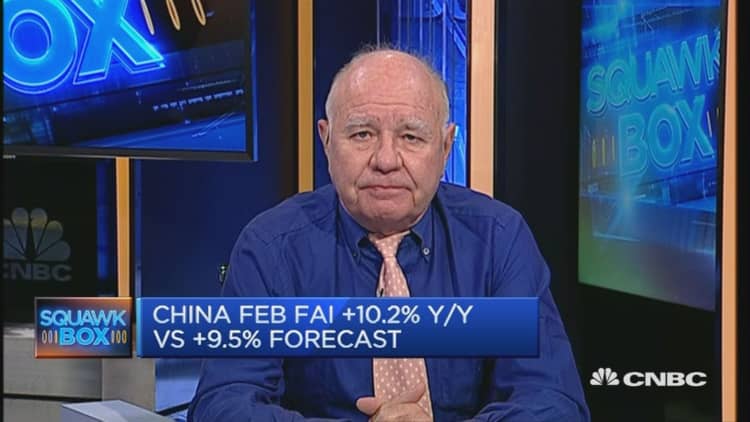How bad are the chances that the Fed will lift interest rates?
The odds of a 16 seed upsetting a 1 seed for this year's NCAA basketball tournament are better than the chances Wall Street has priced in that the Federal Reserve will raise interest rates when policymakers complete a two-day meeting Wednesday.
The CME Group's 30-day Fed Fund futures prices, which are used as a weather vane by market strategists to predict U.S. monetary policy, have the odds of the Fed raising rates at less than a half of 1 percent this week, as March Madness begins around the country. NCAA tournament analysts point out that, despite 16 seeds going 0-124 against top-seeded teams, their odds of victory are a scant yet feasible 1.6 percent.
Many banks predicted the Fed would raise rates three times this year — then, as market conditions deteriorated to begin 2016, they started scaling back expectations. The Federal Open Market Committee itself has forecast four, though that could change when it releases its Summary of Economic Projections on Wednesday.
"It is too early for the FOMC to determine whether these recent policy measures will translate into a sustained firming of global growth prospects," Deutsche Bank economists wrote in a recent note to clients. "This would effectively take an April hike off the table but allow the Fed to raise rates in June if economic and financial conditions warrant."
For now, that will have a negative impact on Wall Street banks, which began the year with expectations of increasing rates. Globally, central banks have been moving toward lower rates and negative interest as U.S. policymakers try to navigate the American economy through a series of hikes.
"More and more countries are moving to negative interest rates," said John Garvey, U.S. banking and capital markets leader at PwC.

There are scant silver linings to be had on Wall Street if and when the Fed fails to move later this week. It's still good news for Wall Street banks that the Fed isn't likely to go negative with rates, which was widely discussed by economists and pundits during the stock market free-fall that began the year.
The four biggest U.S. consumer banks — Wells Fargo, JPMorgan Chase, Bank of America and Citigroup — made roughly $5.85 billion through interest on $911 billion in deposits held at the Federal Reserve last year. As long as interest rates do not decrease the banks stand to enjoy marginal increases in what they make on the cash stashed at the Fed.
As Garvey points out, mortgage businesses tend to benefit from extended low interest rates. However, it's a business banks have been less involved in as online competitors including Quicken Loans have stepped up lending efforts.
Read MoreAre central banks doing more harm than good?
And despite concerns echoed throughout the marketplace while stocks suffered, many executives' plans for deals remain unchanged — yet another boon for banks.
"Market conditions have improved as of late," said Jason Goldberg, Barclays' managing director and senior equity analyst. "Investment banking pipelines continue to be strong."
Then again, the second full week of March has never been a safe time to rule out anything. Fed Chair Janet Yellen may still somehow play the Lehigh University to the market's Duke-sized expectations.






